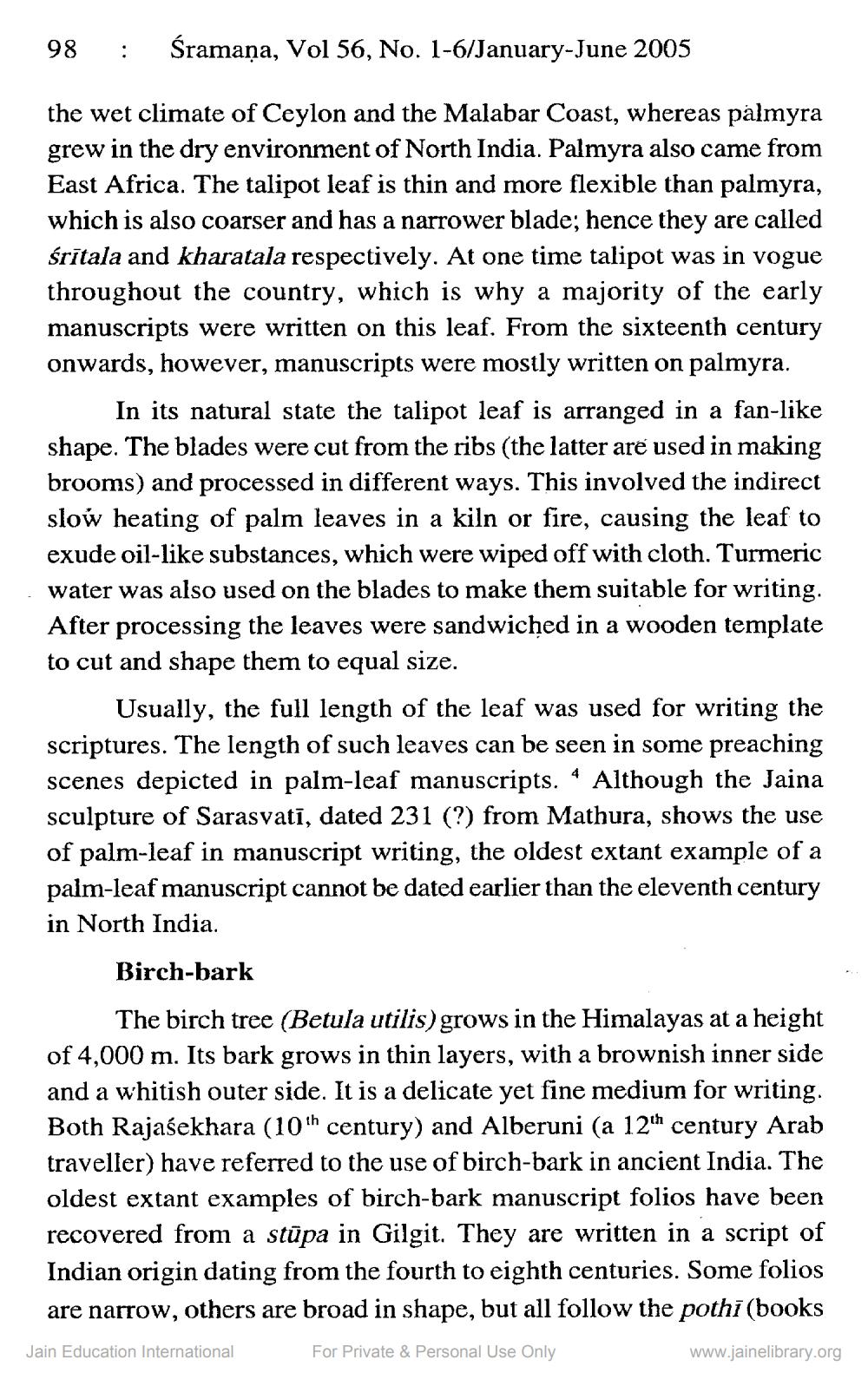________________
: Śramana, Vol 56, No. 1-6/January-June 2005
the wet climate of Ceylon and the Malabar Coast, whereas palmyra grew in the dry environment of North India. Palmyra also came from East Africa. The talipot leaf is thin and more flexible than palmyra, which is also coarser and has a narrower blade; hence they are called śrītala and kharatala respectively. At one time talipot was in vogue throughout the country, which is why a majority of the early manuscripts were written on this leaf. From the sixteenth century onwards, however, manuscripts were mostly written on palmyra.
98
In its natural state the talipot leaf is arranged in a fan-like shape. The blades were cut from the ribs (the latter are used in making brooms) and processed in different ways. This involved the indirect slow heating of palm leaves in a kiln or fire, causing the leaf to exude oil-like substances, which were wiped off with cloth. Turmeric water was also used on the blades to make them suitable for writing. After processing the leaves were sandwiched in a wooden template to cut and shape them to equal size.
Usually, the full length of the leaf was used for writing the scriptures. The length of such leaves can be seen in some preaching scenes depicted in palm-leaf manuscripts. 4 Although the Jaina sculpture of Sarasvati, dated 231 (?) from Mathura, shows the use of palm-leaf in manuscript writing, the oldest extant example of a palm-leaf manuscript cannot be dated earlier than the eleventh century in North India.
Birch-bark
The birch tree (Betula utilis) grows in the Himalayas at a height of 4,000 m. Its bark grows in thin layers, with a brownish inner side and a whitish outer side. It is a delicate yet fine medium for writing. Both Rajasekhara (10th century) and Alberuni (a 12th century Arab traveller) have referred to the use of birch-bark in ancient India. The oldest extant examples of birch-bark manuscript folios have been recovered from a stūpa in Gilgit. They are written in a script of Indian origin dating from the fourth to eighth centuries. Some folios are narrow, others are broad in shape, but all follow the pothi (books For Private & Personal Use Only
Jain Education International
www.jainelibrary.org




